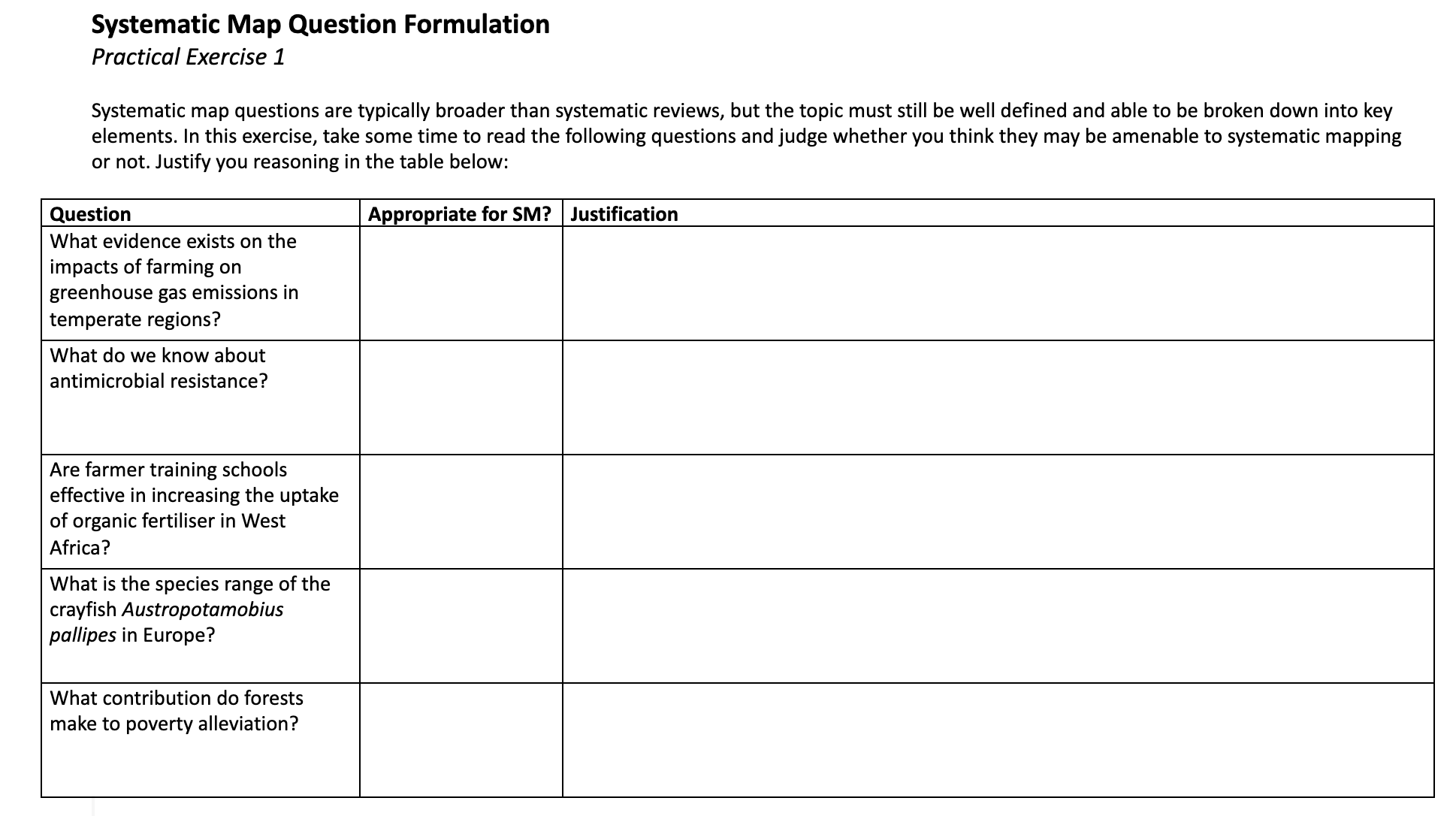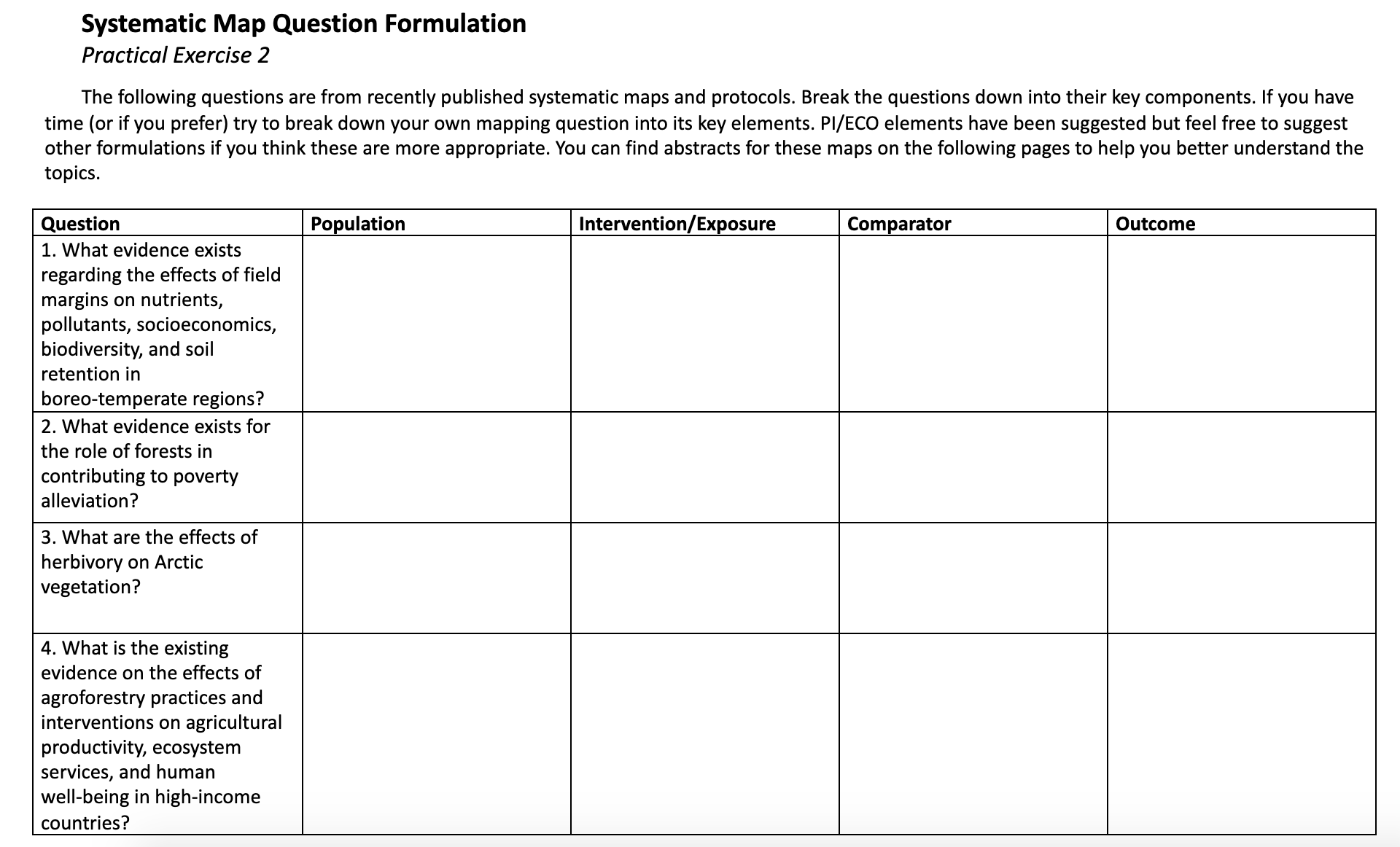
2. Systematic map question formulation
This session will introduce question formulation and describe how this process is unique to systematic maps, using recent examples. In a practical exercise, you'll first consider whether example review questions are most suitable for systematic reviews or systematic maps, before then attempting to break down example map questions into their key components.
Learning objectives
- To understand what question formulation is and why the process is important
- To appreciate how stakeholders can help formulate review questions
- To be aware of how to formulate and refine review questions
- To appreciate how to prioritise multiple review questions
- To gain experience of considering whether questions are suitable for systematic review or mapping, and of formulating questions by breaking them down into their key components
To begin, watch the following presentation.
You can find the lecture handouts here.
Practical exercise
Part 1
We have provided you with five example questions - your task is to consider how well they suit systematic mapping in their current form. Systematic map questions are typically broader than systematic reviews, but the topic must still be well defined and able to be broken down into key elements. Take some time to fill in the form accessible below.

Once you've had a go, check out the model answers here. How do you responses compare with ours? Is there anywhere that you really disagree? Why might that be the case?
Part 2
In this part of the exercise, you will work with some real systematic map questions, breaking them down into their consistuent key elements according to the PICO (population/intervention/comparator/outcome) framework. You can access the form and fill it out below.

You can find the model answers here. How did you do in comparison? What were the causes of any disagreements, do you think?
Now that you have seen how question formulation in systematic mapping differs from systematic reviews, we will move on to look at the next different step: extraction of meta-data and study coding.
Move to the next module!